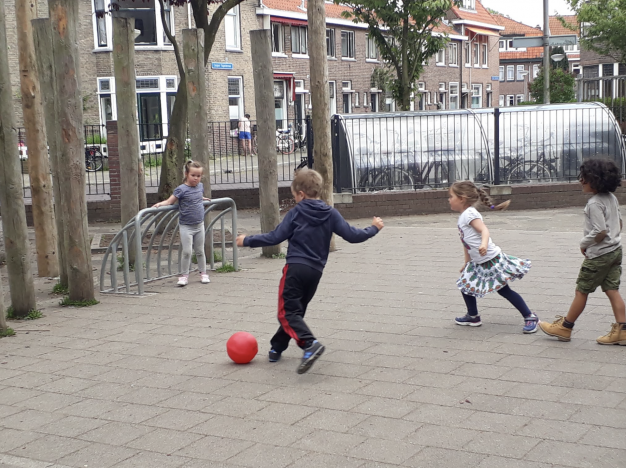
The child in the city (1978): An extensive summary
In 1978 Colin Ward wrote the widely read and much quoted book ‘The Child in the City’. The book is an attempt to explore the relationship between children and their urban environment. It asks whether it is true that something has been lost in this relationship and speculates about the ways in which the link between city and child can be made more fruitful and enjoyable.
More than forty years after its publication, we pick up the book and look for similarities and differences with the current time and search for lessons, writes Gerben Helleman, author of the blog Urban Springtime.
Colin Ward, born in 1924 in England, was a city dweller for fifty years before he moved deep in the country. From 1952 to 1961, he worked as an architect. In 1971, he became the Education Officer for the Town and Country Planning Association. As an explorer of popular and unofficial uses of the environment he published widely on education, architecture and town planning. The Child in the City is his most influential book. In this he examines the everyday spaces of young people’s lives and how they can negotiate and re-articulate the various environments they inhabit. As a storyteller he shows the creativity and uniqueness of children (five to sixteen years old) and how they cultivate ‘the art of making the city work’. He argues and shows with different stories that through play, appropriation and imagination, children can counter adult-based intentions and interpretations of the built environment. “The city is in itself an environmental education, and can be used to provide one, whether we are thinking of learning through the city, learning about the city, learning to use the city, to control the city or to change the city” (p.152).
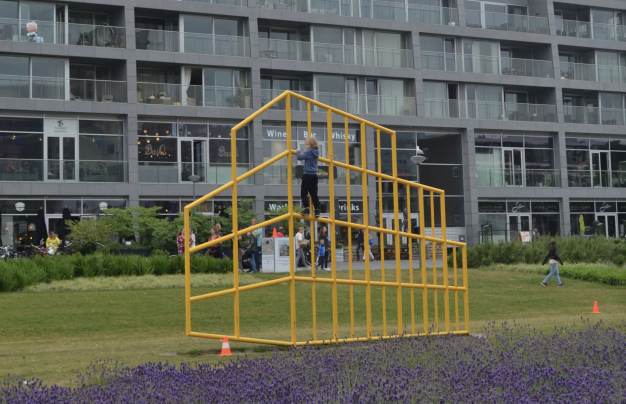
The city as a playground
The common thread of the book is that “children will play everywhere and with anything” (p.72), with which we immediately cited his most quoted sentence. Which is repeated later in modified form: “children play anywhere and everywhere” (p.180). He shows that even in monotonous high-rise buildings kids will find leads for play: going up and down with the elevators, collecting doormats, launch a plastic model aeroplane from the top floor, bouncing a ball at all angles in a hall, etc. Children will adapt to their conditions of living. An even more interesting quote for me is therefore: “A city that is really concerned with the needs of its young will make the whole environment accessible to them, because, whether invited to or not, they are going to use the whole environment” (p.73).
With this he also opens up a still existing discussion about the growing number of formal places for play, such as playgrounds and football fields: enclosed and gated areas specially designed for children (places for children). He quotes the German landscape architect Hermann Mattern: “the failure of an urban environment can be measured in direct proportion to the number of ‘playgrounds'” (p.73). Ward rather sees a world in which the adults and kids share the same world without land-use conflicts. He emphasises the importance of the more informal spaces that children can appropriate for themselves (children’s places), such as sidewalks, parks and especially residual spaces (“the breeding ground for adventure”). And he shows the importance of simple things such as a fire hydrant, a garden hose, a ditch, ponds, and a pile of sand dumped by builders in the street. In several places in the book Ward reminds us not to be fixated on these planned play areas: “Because some bit of the city is designated as a play-space on a plan, there is no guarantee that it will be used as such, nor that other areas will not be” (p.180).
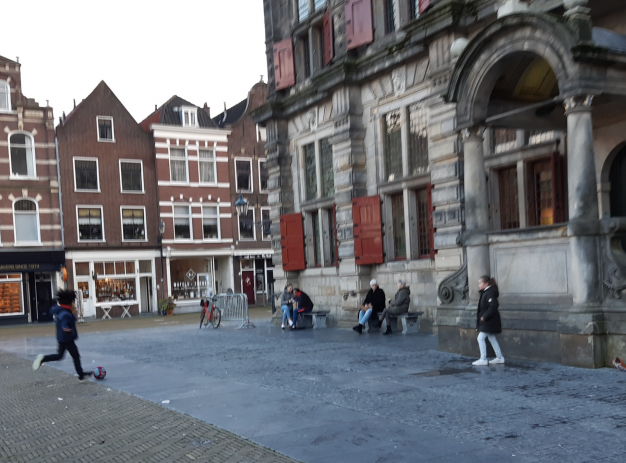
Collection of anecdotes
The book is a collection of studies conducted by other people, quotes from (fiction and non-fiction) books, conversations with professionals and “sympathetic observations of what children actually do” (p. ix). Some statistics are mentioned here and there, but the book is mainly composed of various ‘narratives’. A qualitative research method that relies entirely on human experiences, their stories and recollections.
This research and writing method is in line with what the author already emphasizes in the preface: it is impossible to speak in general terms about either cities or children. He quotes Margaret Mead, an American cultural anthropologist, who featured frequently as an author and speaker in the mass media during the 1960s and 1970s: “It’s a good thing to think about the child as long as you remember the child doesn’t exist. Only children exist. Every time we lump them together we lose something.” Ward adds (p.vii): “It is not just a matter of the enormous differences between individuals. Every child is in a different state of being or becoming.” This nuance and perspective makes the book a succession of thoughts and observations and much less a book of thorough analyzes and generalizations. Which doesn’t mean that sometimes a few nice theories pass by to place those thoughts in a certain frame, such as Jean Piaget‘s theory of cognitive development and the perceptual form of urban environments by Kevin Lynch, introduced in his book The Image of the City.
In twenty chapters a wide variety of topics are discussed and the way these are experienced in mostly Britain and the United States. Major topics are covered, such as poverty, safety, housing, traffic, immigration, and school systems, but also subjects like the pedal car, scouting, youth workers, and school buses.
The common thread is the comparison between the child at the beginning of the last century and the life of children in the modern city of the 1960s and 1970s. Over these years, the built environment has changed a lot and this Ward argues had some important consequences for the play possibilities and life-experiences of the child.
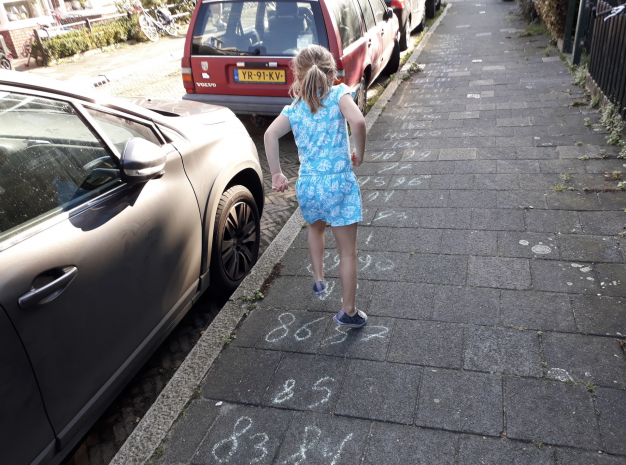
Modern city
Initially, the author indicates that the modern child is a lot better off in terms of life expectancy than the scrawny, dirty, hungry, ragged boys and girls in the industrialized society full of child labour and poverty. Thanks to new construction of single-family houses and suburbanisation, many children were able to enjoy more space and a room of one’s own. Responding to the quest for personal privacy and social isolation. Which – in the more prosperous parts – also provided another important advantage: “The domestic back garden in the city is a family asset of incalculable value, not just for growing things, but because it is another room for the house: a workshop, a playpen and a playground” (p.166).
At the same time, modern urban planning also created enormous, mono-functional, similar, residential areas. That’s why Ward wonders whether what qualities the modern city really has to offer to the child in comparison to the old city quarters. Together with the introduction of the car into our public realm he argues that we have lost not only safe streets to play, but also an urban and dynamic environment with a variety of human being and a huge range of activities (see for an impression these wonderful pictures of Tish Murtha from Newcastle in the 1970s).
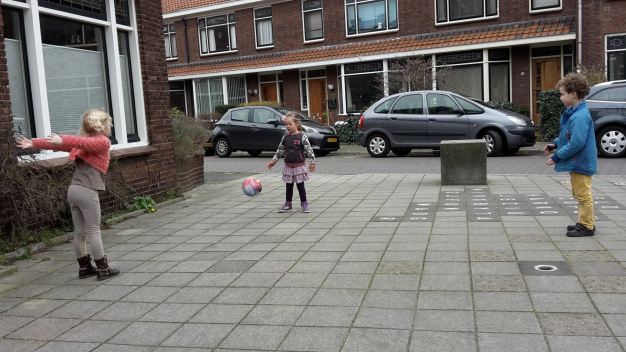
Exploring the streets
With anecdotes he shows how small children at the beginning of the last century encountered a range of sensory experiences and how they developed themselves thanks to the freedom of the streets. By for example traveling great distances through the city to make some money or to buy groceries. In this way they acquired all kinds of skills: reading signs, counting money, reading and talking to strangers and way finding. Children always had something to do and worked (subconsciously) through their experiences on their self-confidence and purposeful self-respect. They were – according to Ward – the final generation of children who actually had a function in the inner city.
Whereas the children of the 1920s were exploring the streets, the children of the 1970s are “wandering”. This is not only due to the changing built environment and fast-moving traffic, but also because children are allowed to explore their environment less and less. This as a result of a “mixture of parental control, personal fear and a lack of knowledge of how to get about, as well as the availability and cost of public transport” (p.44). As a consequence children are often “bored” or even attracted to “juveline vandalism” according to Ward. “The city has failed its children […] it fails to offer legitimate adventures” (p.178). At the end of this article I describe how he wants to realize that again.
Through the eyes of a child
Another important lesson Ward wants to teach us, is to see the city more from a children’s point of view. An electric box on the footpath for example has a value for children as a feature for hiding behind or climbing on. Things which the adult eye just does not see. It is especially the vivid sensory experience that is common among children (p.22): “The younger the child the closer his eye-level is to the ground, and this is one of the reasons why the floorscape – the texture, and subdivisions of flooring and paving, as well as changes of level in steps and curves (small enough to step over for an adult, big enough to sit on for a child) – is very much more significant for a child.”
He shows that the world for the child is full of miracles, it is one big varied experience.
“Lacking social awareness, the perception of the environment is not ‘tainted’ by social considerations. He has not acquired that selective vision that distinguishes the beauty of the flowers from that of the weeds” (p.22). When we get older we lose that, because the senses are dulled by familiarity, but his point is also that there has been a physical decline in sensitivity to taste, to smells, to colour and to sound. The built environment has become a lot duller and the commercially-oriented planning of our cities is clearly aimed at one group only: “The unspoken assumption has been made that the city exists for one particular kind of citizen: the adult, male, white-collar, out-of-town car-user” (p.25).
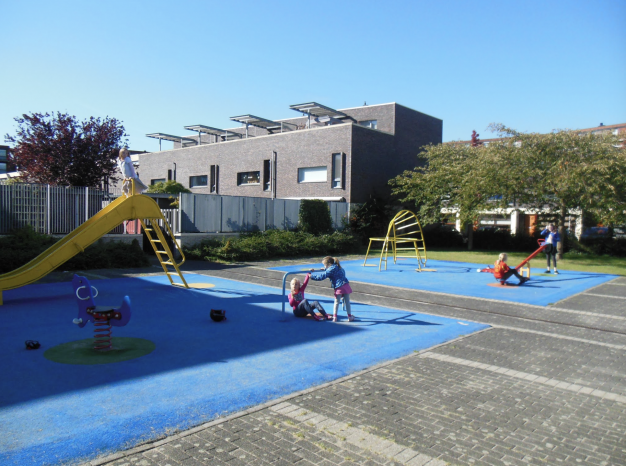
Poverty
Multiple sections in the book are about the poor or deprived child. He argues that, especially for them, playing outside is of great value. Since the average working-class house is a small and inconvenient place and often filled with large families, kids escape outside. Using the street as overspill space. “The relatively affluent, with the freedom of choice that money can buy, select the suburban street, where their children can be, at will, indoor or outdoor kids” (p.35). And here and there he discusses also issues such as child runaways, child labour, the decline of family solidarity, and vagrant, begging and thieving boys. At the same time, he shows the survival skills of these children by getting started as shoe-shine boys, paperboys, street artists or helping the milkman (remember that we are still talking about a book from 1978).
This is also where the true nature of the writer emerges, who was known as an anarchist. Aimed at removing authoritarian forms of social organisation and replacing them with self-managed, non-hierarchical forms. He explains the persistent poverty among families largely by the way work is organised, the commercialisation of leisure, and the changed scale of the modern city. “All demand a higher level of competence and know-how than was acquired of the poor city dweller in the past. You have to be cleverer to cope (p.16).” In other words: it depends on the social and economic capital of a household whether a child is aware and can use the various play (and educational) options in the city.
Urban versus rural
Although he himself indicates in the foreword that the distinction between the city, suburb, small town and village becomes less tenable over the years, the contrast between the city and the countryside and between the inner city and suburbs is continuously palpable in the book. The city – with the promise of variety and excitement – is seen as an irresistible magnet that pulls. Over the years, however, it has faced stiff competition from the suburban area. Thanks to the transport revolution many families moved to the suburbs for space, new dwellings and privacy. A newspaper in 1974 headlined ‘London no more a city of children’.
In the early years the suburbs had many areas that were left out of development which were colonised by the young. “The place that is becoming, the unfinished habitat, is rich in experiences and adventures for the child, just because of the plenitude of ‘unmake'” (p.67). In a more mature form the suburbs loses these play options. In addition, the child misses the aforementioned sensory experiences in these residential areas. And so Ward makes this – still – valid argument: “Can we imagine a city in which children are housed at a density which provides space for family life and activities and, at the same time, offers contact with the world of work and with the variety of participatory activities, as well as spectator entertainments which the contemporary urban child demand? Can we merge the obvious advantages of suburbia with the traditional advantages of the inner city? We probably could if we had the political will to burst the bubble of inner city land values” (p.71).
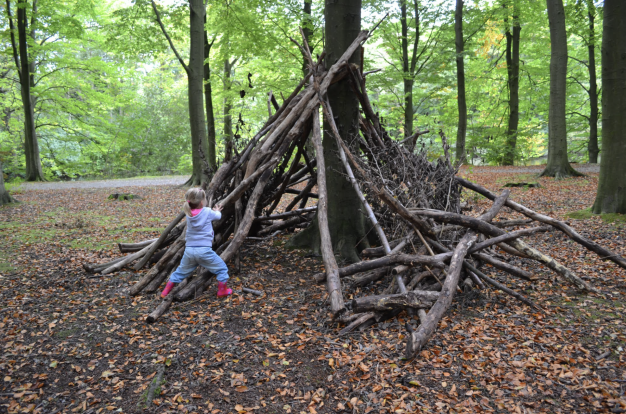
Recognition
The book is full of insights and discussions that are still current. For example how the book talks about the shortcomings of the standardized playgrounds. Playgrounds that are “designed for insurance companies”. And he quotes Paul Friedberg, an American landscape architect, that “we have taken the romance out of parks because of our mania about maintenance” (p.73). Ward makes a plea for adventure playgrounds. A type of playground that has only been gaining ground in some countries for a number of years, but is already praised in this book from 1978: “the swings and slides of the engineer have been replaced by those of the scrap merchant: the tubular steel climbing frame of the equipment manufacturer by the old telegraph pole or railway sleeper; the chain by the rope, the wood swing seat by an old tyre” (p.73).
Next to the (false) security and maintenance goals, these formal playgrounds are also a result of the fact that we do not understand enough how children experience the city. “We could have a clearer idea of the way the environment could be adapted for use by children if we looked at the way children actually use it. If you ask adults about their happiest or most vivid recollections of city childhood they will seldom talk about the park or playground, but they will recall the vacant lot, the secret places behind billboards or hoardings” (p.74).
It is also striking that in the chapter Town child as country child he already makes a plea for natural schoolyards. The schoolyard shouldn’t be necessarily spacious, but rather hilly with trees and lots of corners where groups can make their own hide outs. A place of darkness and light, of grass and of earth.
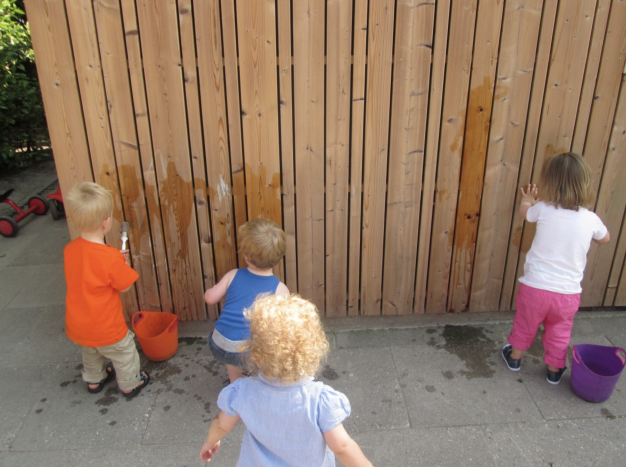
Differences
In addition to these similarities, there are also a number of things that are quite outdated. One of which is the way girls are written about and the small role they played in public space at the time: “Girls are far less visible. The reader can verify this by standing in a city street at any time of day” (p.131). In those days girls were constrained by domestic tasks and being entrusted with the younger children at home. While the boys could climb trees, get muddy in the pond and return home with their clothes torn, the girl was expected to return immaculate. Girls now play more outside then in those days. The football field is no longer populated by only boys. At the same time, there is still a world to be won: a major study in Belgium in 2019 shows that 40% of the children in the age of 6 to 8 years were girls, but in the age category 9 to 11 years this is only 27% and between 12 to 14 years 34% is a girl (Meire, 2020). A painful observation because playing outside offers various benefits in areas such as health, motor skills, social skills, and the quantity of environmental experiences.
There are several reasons for this difference between boys and girls, one of which was also current in 1978: “Boys can stay out longer and later. They, it is assumed, are more capable of looking after themselves. Parents fear for their girls.” At the same time, we shouldn’t be fixated on gender alone, because we know that other factors also play an important role in the amount of time spend outside, such as “social class, age, position in the family [and] ethnic and religious background” (p.132).

Integrating the child into the city
All in all, the message of Ward is clear: we should take the needs of children more into account and recognise the need to find a place for them in social life. Giving them an opportunity to be useful. We should not see the child as a special kind of person, but rather as someone who is becoming an adult which we have to induct into the world of adult decision-making.
If this claim of children to share the city is admitted, “the whole environment has to be designed and shaped with their needs in mind, just as we are beginning to accept that the needs of the disabled should be accepted as a design factor” (p.180). A built environment that makes life more vibrant and interesting for everyone. So he stays away from the romanticized image of a playing child in an ideal living and protected environment. The challenge is not to build a Disney-like environment where the real world is far away. “I don’t want a Childhood City. I want a city where children live in the same world as I do” (p. 179). It’s a plea for integration instead of exclusion. In which the city can act as an important educational resource: through its buildings, places and artefacts (“hard city”) and through human contacts and activities (“soft city”). A city where playing and learning come together again.
Gerben Helleman is an urban geographer based in The Netherlands, and the author of the ‘Stadslente’ (Urban Springtime) – blog. This article is republished with his kind permission. All photos by Gerben Helleman.




